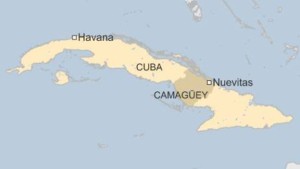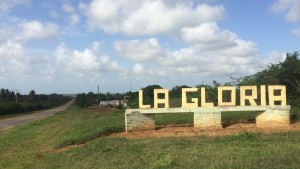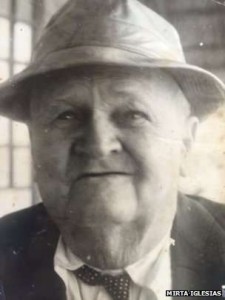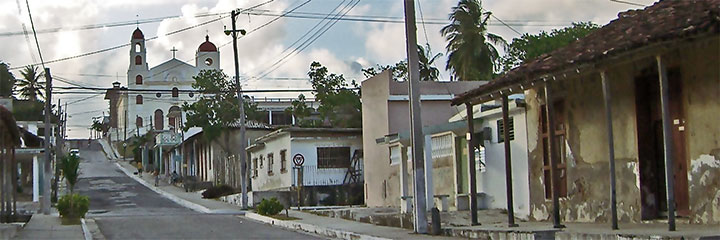“THE GLORY CITY”, CAMAGUEY: THE LAST AMERICAN CITY IN CUBA.
The name of the town reportedly dates back to its foundation in 1900.
On 4th January 1900, not even two years after Cuba had finally wrested itself from Spain’s colonial grip, the steamer Yarmouth came over the horizon off the coast of Nuevitas, on Cuba’s northern shore.
On board were 200 men and women from the United States intent on building a colony on the Caribbean island.
They hoped that if enough of their fellow nationals followed their lead, eventually Cuba would be annexed by the US.
Local folklore has it that after days fighting a path through the swamp, the early settlers were so happy to reach somewhere that was not knee-deep in mud or thick with swarms of mosquitoes that they proclaimed it to be “the glory”.
La Gloria City was born.
In fact, they had been sold a lie.
They had bought plots of land in a town that existed only in the blueprints of the Cuba Land and Steamship Company of New York.
Upon realising the deception, many cut their losses and went home.
The hardy ones stayed on and became citrus farmers, sugarcane growers and cattle farmers.
The sweltering humidity is still the same as in those days.
But all that remains of those early 20th Century pioneers today are the gravestones in the local cemetery.
Original settler.
They include a store owner called William Stokes, who was just a baby when his parents chose to make the trip to
He married, raised a family and stayed in the sleepy community for the rest of his life, even after his children left and his business went broke.
William Stokes died in La Gloria in 1974.
By the time of his death in 1974, Mr Stokes was the only original US settler still on the island, earning him the title of “the last North American in Cuba”.
“It’s important to me to maintain this place,” says gravedigger Jorge Gallardo as he leads me to the grave of Willy Stokes, as he calls him.
Mr Gallardo has spent a year hacking back the encroaching vegetation from the cemetery.
“This is our eternal home – for me and my children, and for our North American founders,” he explains.
Nostalgia
One of La Gloria’s oldest residents remembers when it was more of an American than a Cuban town.
Jeanny Martinez feels nostalgic for La Glora’s past.
Now in her late 80s, Jeanny Martinez was fostered by William Stokes’ parents and still speaks near-flawless English.
“La Gloria was all American. Beautiful, American houses. The Methodist church was there and the Episcopal one was over there,” she says pointing from the porch of her small tin-and-timber home.
Like many Cubans of her generation, Ms Martinez speaks of her youth before the 1959 revolution with a mixture of romanticism and nostalgia.
“I have to defend the Americans because lots of people were hungry and they gave them work and food in the orange and tangerine groves,” she says.
“Now La Gloria is not good for anything.”
In 1932 a huge hurricane swept through Camaguey devastating the citrus and sugar crops and destroying the dreams of the thousand or so colonists in La Gloria City.
Most sold up and left.
Among the wreckage was the town’s Protestant church.
More than 80 years later, the groundwork for a new one is only now getting underway.
Built on the original site with funding from Jacksonville, Florida, churchgoers in La Gloria see it as a fitting legacy to this uniquely American corner of the Cuban countryside.
Agencies/Will Grant/InternetHotos/Excerpts/TheCubanHistory.com
The Cuban History, Hollywood.
Arnoldo Varona, Editor.
“LA GLORIA CITY”, CAMAGUEY: EL ÚLTIMO PUEBLO NORTEAMERICANO EN CUBA.
Unos 200 estadounidenses llegaron a Cuba a principios del siglo XX para crear una colonia. Un siglo después, en ‘La Gloria’ solo queda de ellos sus nombres en las tumbas.
El 4 de enero de 1900 llegaron a Cuba en un barco de vapor 200 hombres y mujeres de Estados Unidos con la intención de crear una colonia en la isla caribeña.
Cuando avistaron la costa de Nuevitas, no habían pasado dos años del final de la guerra hispano-estadounidense, así que tenían la esperanza de que si les seguían más compatriotas, Cuba acabaría siendo anexada por EE.UU.
Según cuenta la leyenda, tras días abriéndose camino entre los manglares, los colonos estaban tan contentos de encontrar un lugar en el que el fango no les llegaba hasta las rodillas y que no estaba lleno de mosquitos que se sintieron en “¡la gloria!”
Y así nació ‘La Gloria City´.
Pero la historia no fue tan bonita como parece. En realidad, los colonos fueron víctimas de una mentira: habían comprado terrenos en un pueblo vibrante que sólo existía en los planos de la compañía neoyorquina ‘Cuba Land and Steamship Company’.
Al caer en la cuenta del engaño, muchos volvieron a casa.
Los más duros se quedaron en la provincia de Camagüey como agricultores de cítricos y azúcar o ganaderos.
Pioneros
Un siglo después de aquel capítulo, la humedad sigue siendo sofocante en La Gloria. Y de algunos de aquellos pioneros de principios del siglo XX sólo quedan sus nombres en las tumbas en el cementerio.
Entre ellos está un tendero llamado William Stokes, que era un bebé cuando sus padres llegaron a Cuba.
Se casó, crió una familia y le fue fiel a este pequeño pueblo toda su vida, incluso después de que sus hijos emigraran y su negocio quebrara.
Cuando murió en 1974, William Stokes era el único de los colonos originarios que seguía en la isla, tanto que en La Gloria le llamaban “el último americano en Cuba”.
“Es para mí importante mantener este sitio limpio”, me dice el sepulturero Jorge Gallardo mientras me lleva a ver la tumba de ‘Willy’ Stokes.
Jorge lleva más de un año limpiando los hierbajos que no paran de crecer en el cementerio. “Esta es la casa eterna de los fundadores del pueblo, y en el futuro será la nuestra también, para mí y mis hijos”, reflexiona.
Jeanny Martínez, una de las residentes más viejas del lugar, se acuerda de cuando La Gloria era un pueblo más estadounidense que cubano.
“La Gloria City fue muy bonita”, me dice Martínez, de 85 años, en un inglés casi perfecto.
La mujer fue acogida, aunque no legalmente adoptada, por los padres de William Stokes.
“La iglesia metodista estaba por ahí, la episcopal por ahí”, explica mientras señala desde la veranda de su modesta casa de madera y lata.
Como muchos cubanos de su generación, Jeanny habla de su juventud prerrevolucionaria con una mezcla de romanticismo y nostalgia.
“Tengo que defender a los americanos porque mucha gente tenía hambre en aquel entonces y les dieron trabajo y comida en sus naranjales.
“Ahora La Gloria no sirve para nada”, lamenta.
En 1932 un fuerte huracán pasó por Camagüey y destruyó las plantaciones de cítricos y azúcar en La Gloria. Con ello, se llevó también los sueños de los colonos. La mayoría vendieron sus terrenos y volvieron a EE.UU.
Entre los escombros estaba la iglesia protestante del pueblo. Ahora, más de 80 años después, han empezado a hacer los cimientos de una iglesia nueva, en el lugar de la original y con fondos enviados de Jacksonville en Florida.
Muchos fieles de La Gloria la ven como un buen legado para este rincón estadounidense del campo cubano.
BBC/Mundo/InternetPhotos/Excerpts/TheCubanHistory.com
The Cuban History, Hollywood.
Arnoldo Varona, Editor.







